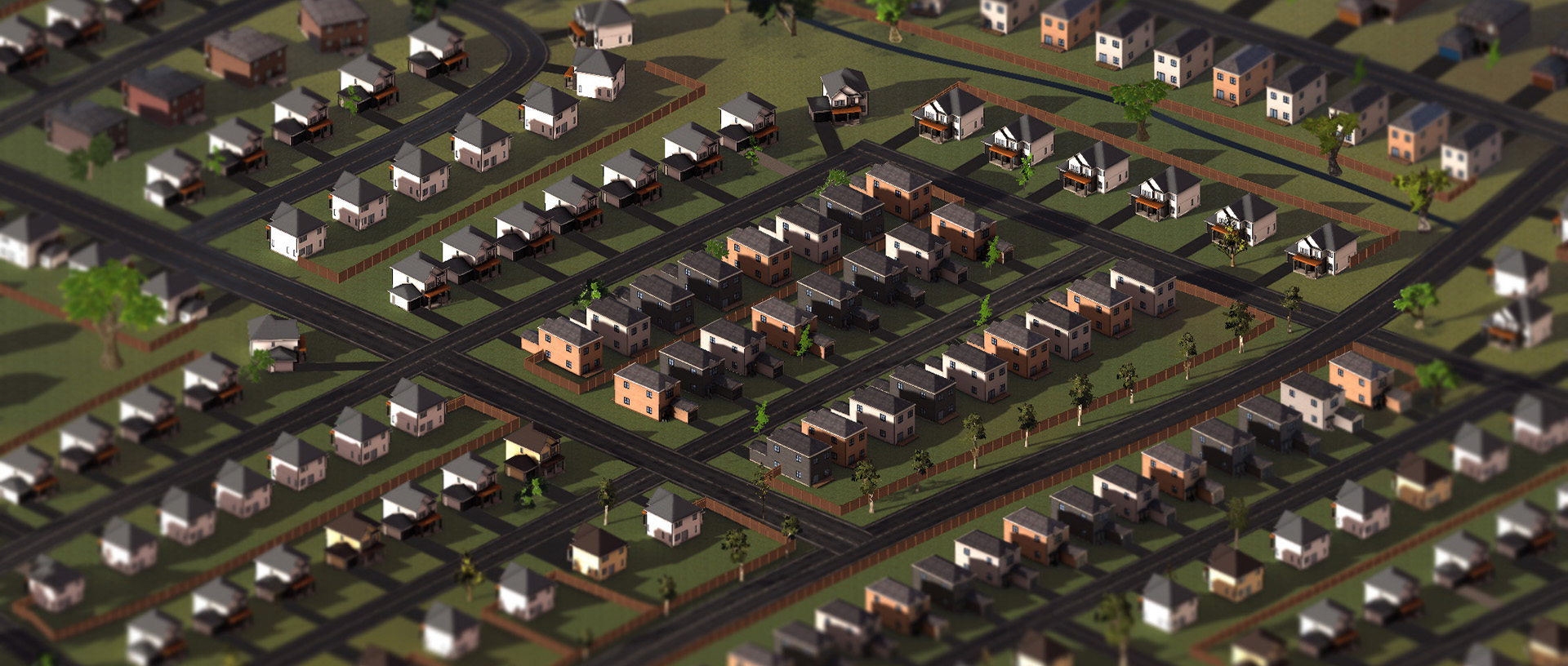
Density Visualization Tool for Gentle Densification
Research Team
Kevin Santos
Valentina Bachkarova
Wladyslaw Bronowicki
Mike Darmitz
Partners
Small Change Fund
Mobilize Seed
Impact
- Gentle density education.
- Supporting sustainable housing solutions.
- Web app unity development.
A Tool for Seeing Ontario’s Housing Future
The Alliance for Liveable Ontario wanted to create an easily accessible tool to allow urban developers, builders and the general populace to see how a neighborhood could change if gentle densification was adopted and to varying degrees. SIRT assisted on the technical side with bringing this to life using Unity.
Addressing Ontario’s Housing Crisis Through Visualization
Ontario is currently experiencing a significant housing crisis. This multifaceted problem primarily means that not enough housing is available, and the homes that do exist are often financially out of reach for many Canadians. Compounding this, the Greater Golden Horseshoe (GGH) area faces issues like a shortage of affordable housing and increasing urban sprawl. While building more homes might seem like a simple solution, it involves complex considerations like zoning laws, building permits, and the potential strain on existing infrastructure and services.
The Alliance for Liveable Ontario proposed a different idea: Gentle Densification. This concept focuses on modifying existing housing to accommodate more families. Examples include building garden suites or renovating garages and basements into separate units. Gentle Densification works best when adopted widely and is viable as both a short- and long-term solution. However, implementing this approach faces two main problems: community hesitation to embrace change that affects their living conditions, and the difficulty for people to imagine what gentle densification actually looks like. There is considerable misunderstanding and resistance to higher housing density due to a lack of clear communication and negative perceptions.
Understanding and accepting higher density options is crucial for sustainable development and addressing the housing crisis.
Developing an Interactive Visualization Tool
To address the challenge of visualizing gentle densification and its impacts, the SIRT team set out to develop an engaging, educational, and interactive web application. This tool was built using the Unity Engine. The approach focused on creating a prototype centred on a single, specific suburban neighbourhood in southern Ontario. This neighbourhood was selected as a typical residential area in the GGH that is an obvious candidate for intensification.
The development process followed a modular and iterative strategy, similar to SIRT’s industry partner projects. Key features included interactive maps and 3D models of the target neighbourhood showcasing various density scenarios. The tool would also incorporate a first person mode allowing users to virtually explore a “street view” under different density configurations. The prototype was designed to account for visualizing the neighbourhood under three different population change scenarios.
The research methodology included several stages:
1. Environmental Scan of Housing Infrastructure – Consulting urban planners to understand Ontario specifics regarding urban density levels, land acquisition, building types, zoning laws, and the public facilities needed per density increase.
2. Environmental Scan of Interactive Media – Researching existing interactive applications to identify the best medium based on ease of use, access, engagement time, interaction types, and potential for customizability and expandability.
3. Developing a Prototype – Building an initial prototype through an iterative process incorporating input and feedback from the Alliance for Liveable Ontario. This aimed to create an engaging “gameplay” experience allowing users to experiment with and explore visualizations of density scenarios.
4.Prototype Completion and Validation/Documentation: Finalizing the prototype and providing documentation for the Alliance for Liveable Ontario to continue the research and use the tool.
An Interactive Prototype for Education and Engagement
The project successfully culminated in the development of an engaging, educational, and interactive web application prototype with limited virtual reality (VR) elements. This tool allows users to visualize how an urban neighborhood could change with widespread adoption of gentle density. It was built in Unity Engine and designed to be easy to access and understand.
The primary objective of the tool is to help residents, policymakers, and urban planners visualize and understand the potential benefits and challenges of different housing density options. By addressing common misconceptions and highlighting benefits, it aims to foster a more positive outlook on density changes and encourage informed decision-making and community involvement in planning.
The output provides the Small Change Fund with an easily accessible and effective visualization tool they can use with community organizations, urban planners, and local government officials. It is also intended for use by the general public and students in classroom settings to provide them with the knowledge needed for informed decisions and to foster a more accepting attitude towards higher density living.
The expected outcomes include increased public understanding of urban planning processes, terminology, and the impact of housing decisions, leading to more informed participation in discussions. It is hoped that the tool will positively impact user acceptance of high-density planning practices and open up new conversations about housing solutions. This prototype serves as a base that the Small Change Fund can use when seeking investors to fund the development of a more in-depth version of the application. SIRT delivered the finalized prototype and supporting documentation to the Small Change Fund for dissemination, offering support on social media.
